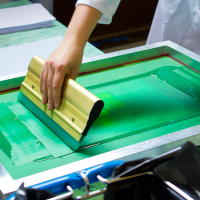
Japan
Contemporary Art in Japan is a vibrant fusion of traditional aesthetics and modern creativity. Japanese artists, such as Yayoi Kusama and Takashi Murakami, have made significant contributions to the global art scene, creating works that span various mediums and explore themes from societal issues to personal experiences. Tokyo, the heart of Japan's art scene, is home to numerous galleries and museums that showcase this dynamic art form. Japanese contemporary art, thus, serves as a powerful platform for dialogue and expression, pushing boundaries and challenging conventions.
Map data ©2020 Google- Show All
- Established
- Discoveries
ARTWORKS RELATED TO JAPAN
Yayoi Kusama
Yayoi Kusama, My Heart That Blooms in the Darkness of Night, 2020
Sculpture / Object
Mixed Media
GBP 140,000 - 170,000
Hiroshi Sugimoto
Lake Superior, Cascade River, 1995 / 2005
Limited Edition Print
Offset Print
EUR 4,325
Hiroshi Sugimoto
Gemsbok (End of Time exhibition poster), 1980 / 2005
Limited Edition Print
Offset Print
EUR 6,125
Hiroshi Sugimoto
Stylized Sculpture 008 (Yves St. Laurent), 2007
Limited Edition Print
Offset Print
EUR 2,750
Takashi Murakami
Homage to Francis Bacon (Study of Isabel Rawsthorne), 2011
Limited Edition Print
Screen-print
USD 17,800

Refers to a print produced through a printing technique in which a ink is transferred using a mesh to a substrate safe for those areas blocked with a stencil to make them impermeable to ink. Screen prints are usually made on posters, T-shirts, vinyl, stickers and wood or any material usable for this purpose. Screen printing is also a method of stencil printing and is sometimes known as serigraphy, serigraph printing, screen or silk screen.






















